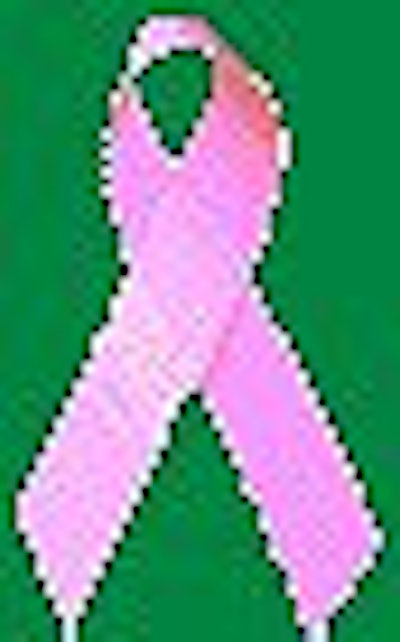
AuntMinnie.com is pleased to present the second installment of a three-part series on breast cancer issues in the international community.
By Dr. Uday Patil
There is no national or state-level population-based breast cancer screening program in India. And while breast cancer is the second most prevalent cancer among women in India, according to the National Cancer Registry, mammography is still in its infancy.
There is no definitive data on the number of mammography units in the country, but data from a major medical electronics vendor estimates the number at 250 for a population of over 1 billion. The installations are concentrated in the major urban cities. Bombay, with a population of 13 million, has 25 machines. Bangalore, with a population of six million, has only 12 units. Both these cities serve a wide geographic area, hence the availability of mammographic facilities is distinctly insufficient.
Poor utilization of existing mammography services is partly responsible for the low number of facilities available. The number of patients undergoing mammography varies from 2-10 per day in freestanding diagnostic centers and from 4-15 in major hospitals. Only three hospitals in the country have two units in place; all the rest have only one unit. Some of the equipment is two decades old, and a few units are from the xeromammographic era.
Lack of awareness in the medical community of mammography's value is another problem. For example, only a fraction of patients who undergo surgical breast cancer treatment have a contralateral mammogram done preoperatively. In addition, only a small fraction of women on hormone replacement are advised to undergo screening mammography. While a number of young women in the 25-30 age group -- with nonspecific breast symptoms such as perimenstrual discomfort or pain -- are referred by their general physicians for mammography, they may not actually need it and are being subjected to unnecessary radiation risks.
The largest number of women undergoing screening mammography are those who have an annual health check sponsored by the companies that they work for -- or by their spouses’ companies. They are generally middle- and upper-level executives.
The number of women who self-refer for breast cancer screening are few, constituting less than 4% of the total number of women screened, according to a survey of three facilities in major hospitals. In the freestanding diagnostic centers, mammography is not always offered as part of the comprehensive health check package, and can cost extra -- as much as $80-$100 more.
Most corporate hospitals and diagnostic center chains do offer health schemes and privilege cards for an annual fee, ranging from $20- $50, and these members are offered a 20%-40% discount on mammography. Medical insurance is also in its infancy in India, and fewer than 5% of the population has coverage. The government of India remains the largest healthcare provider, and in most of its facilities, the services are generally, but not always, free.
Most medical insurance providers in India reimburse investigation costs, for mammography done on hospitalized patients, and for specific indications. Screening mammography for surveillance done on outpatients is not reimbursable.
Another barrier in India is the relatively high cost of the equipment. The basic cost for a screening mammography unit is about $50,000. The fees charged for screening mammograms can vary. In the private sector they range from $15-$40, including the radiologist’s interpretation fees. In government-owned hospitals, screening is free or carries a nominal charge -- but again, facilities are limited.
There is also a lack of training in performance and interpretation. Barring a few of the largest and the best radiology postgraduate programs, most university hospitals do not offer breast imaging as part of the curriculum.
This, along with the lack of public interest and poor professional fees, has kept radiologists away from mammography. The small community within radiology who practice mammography always do so along with another specialty or modality, typically ultrasound.
Practice of mammography by radiologists in India does not affect their professional indemnity insurance premiums. The premium for radiologists is amongst the lowest of all medical specialties. Malpractice litigation pertaining to mammography is rare.
But even though mammography has been highly underused in India, change is in the works. The statutory requirements for the installation of mammography equipment were defined three years ago, and are now governed by the division of radiation protection, under the Atomic Energy Regulation Board of the government of India. Although there are no definite guidelines available for the operational and interpretational requirements at these installations, the installed base of mammography machines has doubled over the last five years.
In addition, the number of freestanding diagnostic centers offering mammography has increased threefold, and with it the number of mammographic exams, most likely due to increasing public awareness. Also, cheaper mammography machines, costing about $20,000, are now available. Mammography’s growth has also been spurred by the increased availability of surgical, medical, and radiation oncology services. But the gap is still large.
Radiologist training in breast imaging remains a problem. Individual groups and organizations are attempting to conduct workshops and CME programs directed at residents and practitioners to bridge this gap.
By Dr. Uday D. PatilAuntMinnie.com contributing writer
October 22, 2003
Dr. Patil is a consultant radiologist at Manipal Hospital and Manipal Academy of Higher Education in Bangalore, India.
Flag courtesy of CIA - The World Flag Book.
Related Reading
Part I: Breast cancer screening in Romania, October 21, 2003
Racial disparities in breast cancer outcomes spark research, October 10, 2003
Calif. Asians, Latinos miss cancer screening-study, September 18, 2003
Diverse Los Angeles population gives cancer clues, August 22, 2003
Statistics suggest strategies for cancer reduction among Hispanics, August 11, 2003
Copyright © 2003 AuntMinnie.com

















